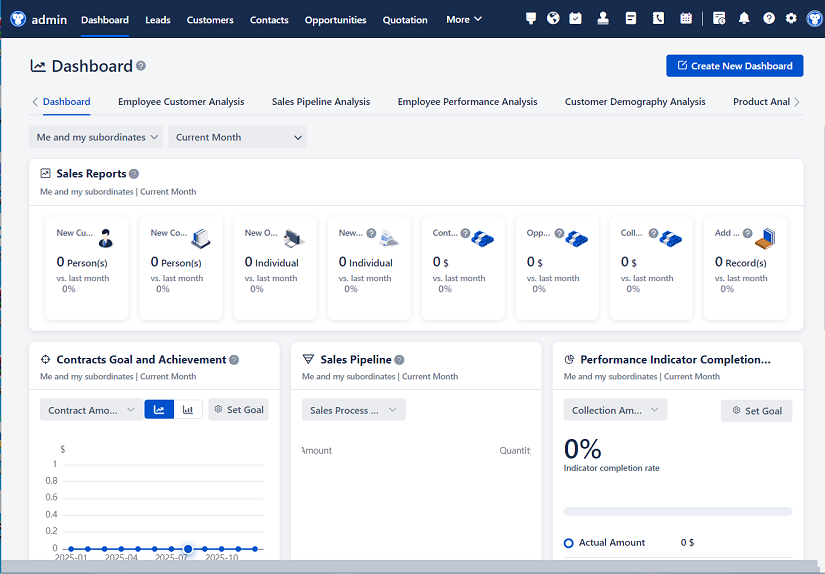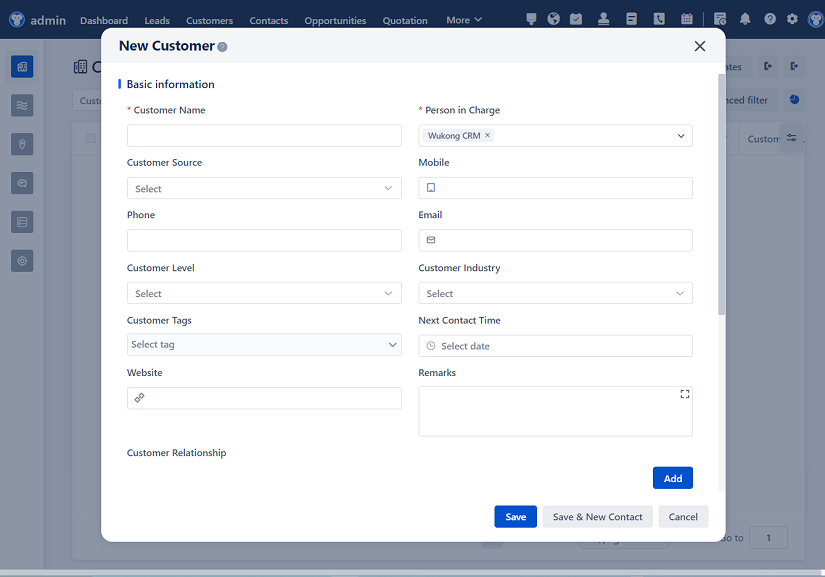
△Click on the top right corner to try Wukong CRM for free
Sure, let's dive into how inventory management systems are integrated within CRM (Customer Relationship Management) systems. It’s a topic that might sound a bit technical at first, but I’ll try to make it as straightforward and relatable as possible.
You know, when you run a business, keeping track of what you have in stock and what your customers want can be a real challenge. That’s where inventory management systems come in. They help you keep an eye on your stock levels, so you don’t end up with too much or too little of anything. But here’s the thing: these systems work even better when they’re part of a bigger picture, like a CRM system.
Think about it this way. A CRM system is like a big digital Rolodex, but instead of just names and numbers, it holds all sorts of information about your customers—what they’ve bought, what they like, and even what they might want next. Now, imagine if this system could also tell you exactly what you have in stock and what you need to order. That would be pretty handy, right?
Well, that’s exactly what happens when you integrate an inventory management system into your CRM. It’s like having a super-smart assistant who knows everything about your customers and your stock. This integration means that when a customer places an order, the system automatically checks if you have the item in stock. If you do, great! The order gets processed, and the inventory level is updated. If not, the system can alert you to place an order with your supplier. No more manual checks, no more back-and-forth emails, and no more disappointed customers because you ran out of something.
But it’s not just about making sure you have enough stock. The integration also helps you understand your customers better. For example, if you see that a particular product is flying off the shelves, you can use that information to plan your future orders and maybe even adjust your marketing strategy. You can also set up alerts for low stock levels, so you never miss a beat. And if you have multiple locations, the system can help you manage inventory across all of them, ensuring that each store has what it needs.
Now, let’s talk about some of the specific features that make this integration so powerful. One of the key benefits is real-time data. Imagine being able to see exactly what’s happening with your inventory at any given moment. You can check stock levels, see which products are selling the fastest, and even get insights into which items are underperforming. This kind of visibility is invaluable, especially if you’re running a business with a lot of moving parts.
Another feature that’s really useful is automated reordering. Let’s say you have a popular product, and you want to make sure you always have enough in stock. With an integrated system, you can set up automatic reorders based on your sales data. So, if you sell 100 units of a product in a week, the system can automatically place an order for 100 more. This not only saves you time but also ensures that you never run out of stock, which is crucial for maintaining customer satisfaction.
And speaking of customer satisfaction, the integration also helps you provide a better experience for your customers. For example, if a customer calls to ask about a product, you can instantly check the stock levels and give them an accurate answer. No more guessing or putting them on hold while you check. This kind of quick and accurate service can make a big difference in how your customers perceive your business.
But it’s not just about the immediate benefits. Over time, the data you collect from the integrated system can help you make smarter decisions. You can analyze trends, identify patterns, and even predict future demand. This kind of foresight is incredibly valuable, especially in a competitive market. It allows you to stay one step ahead and make informed decisions that can drive your business forward.

Of course, integrating an inventory management system into your CRM isn’t without its challenges. There’s the initial setup, which can be a bit of a learning curve. You’ll need to make sure that both systems are properly configured and that the data is flowing smoothly between them. And then there’s the ongoing maintenance. Like any technology, these systems need to be kept up to date, and you’ll need to train your team on how to use them effectively.
But the benefits far outweigh the challenges. When you have a seamless integration, you can focus on what really matters—growing your business and taking care of your customers. And that’s what it’s all about, right? Making sure that your customers are happy and that your business is running smoothly.
So, if you’re thinking about integrating an inventory management system into your CRM, I’d say go for it. It’s a smart move that can pay off in a big way. Just make sure you do your research, choose the right tools, and take the time to set things up properly. Trust me, it’s worth the effort.
Alright, now that we’ve covered the basics, let’s wrap things up with a few questions and answers to help you get a better understanding of how this all works.
Q: What is the main benefit of integrating an inventory management system into a CRM? A: The main benefit is that it gives you a complete view of your business, allowing you to manage your stock and customer relationships more efficiently. You can see what you have in stock, what your customers are buying, and make informed decisions based on real-time data.
Q: Can an integrated system help with forecasting and planning? A: Absolutely! By analyzing sales data and inventory levels, you can predict future demand, plan your orders, and even adjust your marketing strategies. This helps you stay ahead of the game and avoid stockouts or overstocking.
Q: Is it difficult to set up an integrated system? A: It can be a bit of a learning curve, but with the right tools and support, it’s definitely manageable. The key is to choose the right software, configure it properly, and train your team. Once it’s set up, the benefits will make the effort worthwhile.
Q: How does an integrated system improve customer satisfaction? A: An integrated system allows you to provide quick and accurate information to your customers. You can instantly check stock levels, process orders faster, and ensure that you always have what your customers need. This leads to a better overall experience and happier customers.
Q: Are there any downsides to integrating an inventory management system into a CRM? A: The main downside is the initial setup and the need for ongoing maintenance. However, the benefits, such as improved efficiency, better decision-making, and enhanced customer satisfaction, far outweigh these challenges.

I hope this helps! If you have any more questions, feel free to ask.
Related links:
Free trial of CRM
Understand CRM system
AI CRM Systems

△Click on the top right corner to try Wukong CRM for free